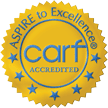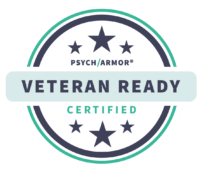The Partnership Between a Rehab Facility and a Client
 Deciding to go to addiction rehab, especially an inpatient facility, isn’t always an easy choice. Many factors might come into play, such as how to pay for treatment, if you can take time away from responsibilities such as family or work, and other obligations. More importantly, where can you place your trust and belief that a rehab center will help your healing? Will they form a true partnership with you? These are a vital questions.
Deciding to go to addiction rehab, especially an inpatient facility, isn’t always an easy choice. Many factors might come into play, such as how to pay for treatment, if you can take time away from responsibilities such as family or work, and other obligations. More importantly, where can you place your trust and belief that a rehab center will help your healing? Will they form a true partnership with you? These are a vital questions.
Accept Whole-Person Care
To fully approach recovery in a holistic, long-lasting way, it’s not enough to go somewhere for physical detoxification and consider the process complete. Without question, this initial stage of healing—eliminating chemical toxins from the body and mind—is critical to your success.
But all too often, individuals suffering from addiction have other issues, including major physical ailments and mental health disorders. These conditions must be identified and addressed in tandem with detoxification. So it’s essential that your rehabilitation facility have a full medical team—including physical and psychiatric care—that unifies to share information about your full health and create a continuum of care treatment plan. This is the type of partnership that works best for long-term wellness.
If you or a loved one needs addiction treatment, please don’t skip this step. Evaluate facilities based on the complete compass of whole-person treatment. Their staff members should meet not only immediate (and obvious) care needs, but also those underlying, unconscious needs that, once illuminated, create a foundation for more effective recovery.
Open Up to the Benefits of Mental Health Care
It’s important to remember that addiction doesn’t happen suddenly. It also doesn’t happen in a vacuum. Anyone, regardless of age, economic status, or gender, can develop substance use disorder (SUD) or alcohol use disorder (AUD). If certain risk factors are present, the descent into addiction is more likely.
According to Mayo Clinic, here are the primary risks:
- Family history. Some people might have a genetic predisposition to addiction. This doesn’t mean they’ll automatically develop SUD or AUD. But close family members with these disorders pose a problem for an individual who isn’t managing stressors effectively or dealing with other issues in a proactive manner.
- Mental health issues. Conditions such as anxiety, attention-deficit/hyperactivity disorder (ADHD), bipolar disorder, depression, PTSD, trauma, and others are considered co-occurring disorders to SUD and AUD. They might be underlying causes for addiction, too, especially if undiagnosed or improperly treated.
- Influences. Peer pressure, especially among teens, contributes to using or misusing drugs and alcohol, but adults suffer from this as well. Additionally, exposure to drugs and alcohol at an early age causes changes in a young person’s developing brain and increases the likelihood of developing SUD or AUD.
- Lack of family involvement. “Difficult family situations or lack of a bond with your parents or siblings may increase the risk of addiction, as can a lack of parental supervision,” Mayo states.
- Taking a highly-addictive drug. Some drugs, such as stimulants, cocaine, or opiates, may result in faster development of addiction than other drugs, especially if one or more of the above risk factors are present.
Various Types of Therapies
As you can see, addiction goes far deeper than just a drug or drink. To truly get to the cause of it, you or a loved one must be willing to move through various types of therapies to fully understand and resolve it.
“Various types” doesn’t mean a never-ending time in counseling. But it’s critical for true recovery that an individual not simply want to “get clean.” Instead, they should accept the strength in vulnerability and want to uncover the reasons for aspects of behavior that no longer serve them.
Thus, a quality facility should have personnel skilled in aspects such as:
- Individual, group, and family therapy
- Cognitive behavioral therapy
- 12-Step and holistic recovery support methods
One therapy session isn’t the cure. And frankly, there’s not a “cure” for SUD or AUD. But like any other chronic health condition, these disorders can be managed well for a lifetime. An individual should receive comprehensive techniques during rehab to do this, allowing for continual modifications along the way.
The Partnership Doesn’t End
If the professionals at a rehab facility do their jobs well, you or a loved one should have the opportunity for balance in life, free from the negative consequences of addiction. However, no one should be set loose into the “real” world after a 30, 60, or 90-day stay without additional wellness tools.
A rehab facility should continue the partnership, and provide elements such as a quality aftercare program, outpatient services (or access to them), and community support groups online or in-person. These reinforce the essential ground covered during early recovery and reassure clients that they’re never alone in this quest.
Can We Help?
Remember, each addiction rehabilitation center will have unique characteristics, and sometimes these make the decision more nuanced. However, the basics outlined here are evidence-based methods and provide individuals with greater recovery success. When choosing a rehab facility, you have every right to ask questions and review all aspects of the approach. This is your turning point, and you deserve the best. If the admissions team at Seabrook can be of service, please reach out.




